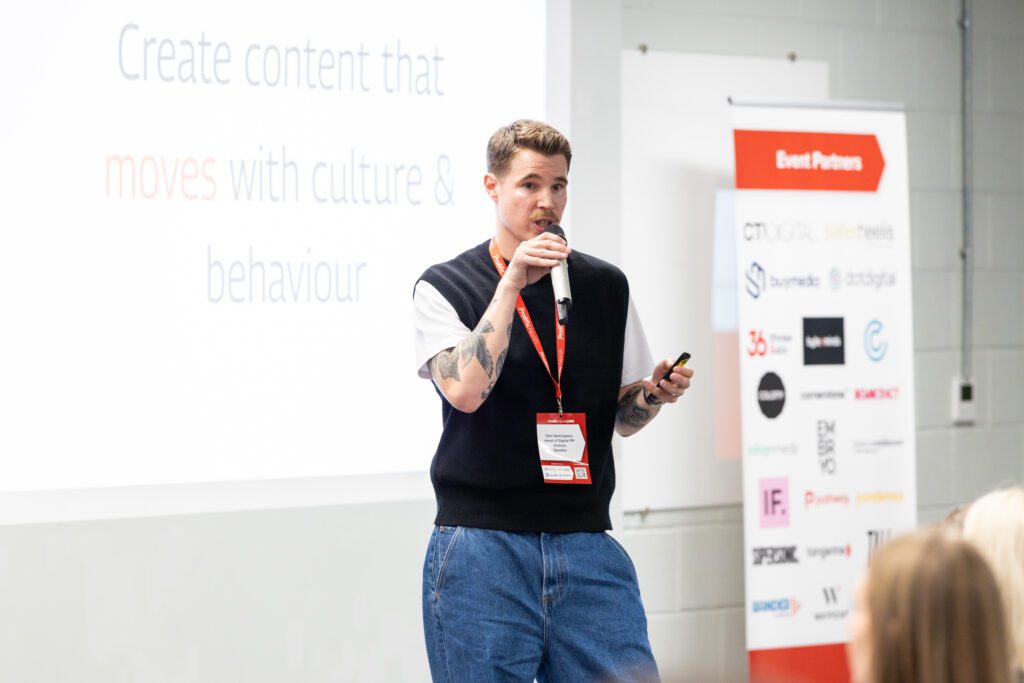
How social media is fuelling our obsession with fast fashion

Typically, trends run on a ‘20 year cycle’ meaning clothes we were wearing 20 years ago are considered fashionable again. However, in recent years, the speed of the fashion cycle has accelerated, largely due to social media.
Think about the fashion we all wanted in the early 2000s. Bright colours, mini skirts, colourful sunglasses and chunky shoes. These styles are plastered all over social media. A quick search of #y2k on Instagram and you’ll see 1.7 million posts. But it seems like only last year we all wanted to be dressed in 90’s fashion. Oversized masculine blazers, Levi 501s, biker shorts and classic cuts.
I love fashion and definitely have a shopping problem. I have a wardrobe full of things, yet I constantly find myself scrolling through ASOS. Every time I go on TikTok or Instagram, I’m bombarded with content showing me the latest dress/shoes/jeans that I need to have. There is a certain pressure to be on-trend and with fast fashion brands making it so accessible to buy into these trends, you could have the item in your wardrobe the next day.
Social media is constantly evolving to encourage businesses to spend more on building up their social channels and spending more money on paid social ads. From creating ads that allow consumers to go directly to the product pages, the launch of the “shop feed”, shoppable organic posts and even affiliated links on influencer’s stories
For the consumer, this means it’s never been easier to purchase. In the last two years, social media
referral traffic to online stores has increased by more than 100% and 30% of online shoppers say they would be likely to make a purchase directly through social media
The influencer impact
Fashion Influencers are one of the main players in accelerating trend cycles and encouraging overconsumption. They have thousands, sometimes millions of followers, who admire their style, yet when you think about it, it’s often not ‘their’ style, it’s the style of the brands who send them new products to post every day. Instagram especially, is flooded with influencers wearing gifted items and god forbid they would ever outfit repeat!
Social trends such as ‘Hauls’ and more recently on TikTok, ‘What I’d wear to…’ videos, involving creators showing the masses of products they’ve purchased for the sake of a 30-second video. They may seem like a fun, creative video, but videos like these can lead to more people bulk buying fashion.
This influencer culture means that if you want to be ‘on trend’, you have to buy into a style as soon as it becomes available, wear it once, maybe twice, and then it will live at the back of your wardrobe until your next clear out. The impact of our ‘throw away’ habits and mass consumption are pretty bleak.
- The fashion industry is accountable for 10% of global greenhouse gas emissions.
- We consume around 80 billion new pieces of clothing every year, 400% more than the consumption twenty years ago.
- Some brands using unregulated cheap labour overseas to keep costs low and production high, resulting in human exploitation and child labour
The future of fashion
So what does this mean for the future of fashion? Well, social media has been given a bad rep over the years, but it’s not all bad! It can be used as a great tool to educate people.
In the past few years, there has been a rise in demand for fashion brands that focus on sustainability in fashion. Whether it be the growing number of influencers that buy second-hand clothing through sites like vinted and depop, small sustainable brands that are growing in momentum or the increase in TikTok videos showing people how to ‘re-work’ pieces in their wardrobe. It seems that more people are becoming aware of the negative impacts of fast fashion and are beginning to switch to a more sustainable way of shopping.
@evelilythriftsSome recent thrifts #thrifting #thrifted♬ The Adults Are Talking – The Strokes
In a recent survey by Bigcommerce, 50% of respondents wanted more sustainability in the fashion industry, and this hasn’t gone unnoticed by big fashion brands. H&M and ASOS have both recently launched sustainable lines and Adidas has released a product line made from recycled ocean plastics.
It appears that ‘slow fashion’ and shopping second hand is slowly becoming more popular and even better, more accessible! So next time you find yourself swiping up on that influencer’s story to buy another pair of jeans, ask yourself, do I really need them? And you’ll probably find you don’t. Not only will you be helping to save the planet, but you’ll be saving your pennies too!



